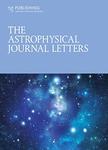版权所有:内蒙古大学图书馆 技术提供:维普资讯• 智图
内蒙古自治区呼和浩特市赛罕区大学西街235号 邮编: 010021
T=题名(书名、题名),A=作者(责任者),K=主题词,P=出版物名称,PU=出版社名称,O=机构(作者单位、学位授予单位、专利申请人),L=中图分类号,C=学科分类号,U=全部字段,Y=年(出版发行年、学位年度、标准发布年)
AND代表“并且”;OR代表“或者”;NOT代表“不包含”;(注意必须大写,运算符两边需空一格)
范例一:(K=图书馆学 OR K=情报学) AND A=范并思 AND Y=1982-2016
范例二:P=计算机应用与软件 AND (U=C++ OR U=Basic) NOT K=Visual AND Y=2011-2016

Event Horizon Telescope (EHT) observations have revealed a bright ring of emission around the supermassive black hole at the center of the M87 galaxy. EHT images in linear polarization have further identified a coherent spiral pattern around the black hole, produced from ordered magnetic fields threading the emitting plasma. Here we present the first analysis of circular polarization using EHT data, acquired in 2017, which can potentially provide additional insights into the magnetic fields and plasma composition near the black hole. Interferometric closure quantities provide convincing evidence for the presence of circularly polarized emission on event-horizon scales. We produce images of the circular polarization using both traditional and newly developed methods. All methods find a moderate level of resolved circular polarization across the image (〈∣v∣〉 < 3.7%), consistent with the low image-integrated circular polarization fraction measured by the Atacama Large Millimeter/submillimeter Array (∣vint∣ < 1%). Despite this broad agreement, the methods show substantial variation in the morphology of the circularly polarized emission, indicating that our conclusions are strongly dependent on the imaging assumptions because of the limited baseline coverage, uncertain telescope gain calibration, and weakly polarized signal. We include this upper limit in an updated comparison to general relativistic magnetohydrodynamic simulation models. This analysis reinforces the previously reported preference for magnetically arrested accretion flow models. We find that most simulations naturally produce a low level of circular polarization consistent with our upper limit and that Faraday conversion is likely the dominant production mechanism for circular polarization at 230 GHz in M87*.

Interpretation of resolved polarized images of black holes by the Event Horizon Telescope (EHT) requires predictions of the polarized emission observable by an Earth-based instrument for a particular model of the black hole accretion system. Such predictions are generated by general relativistic radiative transfer (GRRT) codes, which integrate the equations of polarized radiative transfer in curved spacetime. A selection of ray-tracing GRRT codes used within the EHT Collaboration is evaluated for accuracy and consistency in producing a selection of test images, demonstrating that the various methods and implementations of radiative transfer calculations are highly consistent. When imaging an analytic accretion model, we find that all codes produce images similar within a pixel-wise normalized mean squared error (NMSE) of 0.012 in the worst case. When imaging a snapshot from a cell-based magnetohydrodynamic simulation, we find all test images to be similar within NMSEs of 0.02, 0.04, 0.04, and 0.12 in Stokes I, Q, U, and V, respectively. We additionally find the values of several image metrics relevant to published EHT results to be in agreement to much better precision than measurement uncertainties.

In a companion paper, we present the first spatially resolved polarized image of Sagittarius A* on event horizon scales, captured using the Event Horizon Telescope, a global very long baseline interferometric array operating at a wavelength of 1.3 mm. Here we interpret this image using both simple analytic models and numerical general relativistic magnetohydrodynamic (GRMHD) simulations. The large spatially resolved linear polarization fraction (24%–28%, peaking at ∼40%) is the most stringent constraint on parameter space, disfavoring models that are too Faraday depolarized. Similar to our studies of M87*, polarimetric constraints reinforce a preference for GRMHD models with dynamically important magnetic fields. Although the spiral morphology of the polarization pattern is known to constrain the spin and inclination angle, the time-variable rotation measure (RM) of Sgr A* (equivalent to ≈46° ± 12° rotation at 228 GHz) limits its present utility as a constraint. If we attribute the RM to internal Faraday rotation, then the motion of accreting material is inferred to be counterclockwise, contrary to inferences based on historical polarized flares, and no model satisfies all polarimetric and total intensity constraints. On the other hand, if we attribute the mean RM to an external Faraday screen, then the motion of accreting material is inferred to be clockwise, and one model passes all applied total intensity and polarimetric constraints: a model with strong magnetic fields, a spin parameter of 0.94, and an inclination of 150°. We discuss how future 345 GHz and dynamical imaging will mitigate our present uncertainties and provide additional constraints on the black hole and its accretion flow.

电话和邮箱必须正确填写,我们会与您联系确认。
版权所有:内蒙古大学图书馆 技术提供:维普资讯• 智图
内蒙古自治区呼和浩特市赛罕区大学西街235号 邮编: 010021

暂无评论